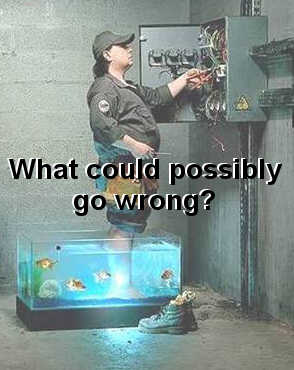It seems to be human nature that we don’t want to think about what could go wrong. Particularly in sales, we are continually optimistic, we want to be positive, particularly with our customers.
So why would we ever want to talk about what could go wrong? Particularly when we are in the middle of the customer buying process?
But it’s an important discussion with our customers, primarily because it helps them think differently and more completely. Doing this creates great value, because it is actually focused on the customer success.
It may sound odd, but if we only focus on all the things that go right–that’s focused on customer success, we miss a huge amount. And there is a high probability, that if we don’t help the customer think about what could go wrong, the customer will fail. After all, they probably haven’t gone through this kind of change before, they don’t know, their prior experience may be old or dated, and they certainly haven’t gone through the change as frequently as we have.
Some will argue, “I don’t want to present the weaknesses of my product!” The reality, unless we have huge quality problems, is that customers seldom fail because of our product, but because of how they implement our solutions.
Take, as an example, CRM. I’ve probably seen more failures than successes. But it’s not because the product has failed, but the customer may not have implemented the solution in the best way possible.
Our goal is to have the customer succeed! We create our greatest value when we work with the customer, helping them learn how to succeed and that includes thinking about “what could go wrong.”
This is an important concept within our own organizations and teams. As we think about a strategy, a new initiative, a new program, we usually are caught up in all the exciting stuff about how great things will be. But things never happen as we plan, and we are seldom prepared for it.
It’s useful, as we think about our strategies, big changes and new initiatives to think about what could go wrong. Even actively thinking about “How do we break this?”
The military has long had the concept of “red teams.” It’s a reference to the cold war and the former Soviet bloc. But they create teams of the “enemy” actively dedicated to defeating the “blue teams.” It’s hugely powerful in helping clarify our thinking and to look at the issues we and our customers face, differently.
Afterword: Thanks to Hank Barnes and Bob Sutton for inspiring this. For those Ray Dalio fans, you will recognize this as an aspect of radical openness.

Leave a Reply